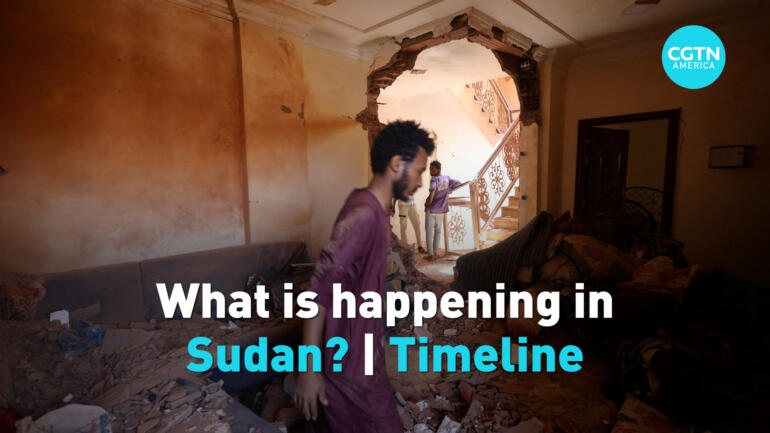On Thursday, April 20, United Nations Secretary-General Antonio Guterres appealed for a three-day ceasefire in Sudan to mark the Muslim holiday of Eid al-Fitr. He said it would enable trapped civilians to escape, seek medical treatment, food and other essentials.
More than 300 people have been killed and more than 3,000 wounded in Sudan since fighting between the Sudanese Armed Forces (SAF) and the paramilitary Rapid Support Forces (RSF) broke out April 15.
Here is a look at Sudan’s political turmoil in recent years leading to the current clashes between the army and the main paramilitary group:
December 2018: Hundreds protest in the northern city of Atbara against rising food costs. A broader economic crisis sparks demonstrations that quickly spread to Khartoum and other cities. Security services respond to the protests with tear gas and gunfire.
April 2019: Hundreds of thousands of protesters stage a sit-in outside army headquarters in Khartoum. Within days, the army overthrows and detains Omar al-Bashir ending his 30-year rule. Protesters continue to demand the handover of power to civilians.
June 2019: Security forces raid the army headquarters sit-in. Armed men linked to the RSF militia kill at least 128 people in the capital.
August 2019: Following mediation by the African Union and Ethiopia, civilian leaders supporting the rebellion sign a “constitutional declaration” to share power with the military during a transitional period leading to elections. Following this, Abdalla Hamdok, an economist and ex-UN official, is appointed to lead the government.
December 2019: Ousted president Omar al-Bashir is convicted of corruption and sentenced to two years in a correctional center.
August 2020: Transitional authorities reach a peace agreement with some rebel groups in the western Darfur region and southern areas of South Kordofan and Blue Nile. However, two significant groups do not agree to the terms of the deal.
October 2020: Sudan agrees to normalize ties with Israel in a deal brokered by the U.S., joining other Arab states. Within two months, the U.S. removes Sudan from its list of state sponsors of terrorism.
June 2021: Sudan receives approval for $56 billion in foreign debt relief after implementing economic reforms under the supervision of the International Monetary Fund.
October 2021: Security forces carry out pre-dawn raids, detaining top civilians including Hamdok, following weeks of bitter disagreements between civilian and military factions and a failed coup attempt. Army chief General Abdel Fattah al-Burhan declares that the civilian government and other transitional bodies have been dissolved.
November 2021: Following mass rallies against the coup and suspension of most international financial aid to Sudan, military leaders and Hamdok announce a deal to reinstate him as prime minister. Hamdok returns to his position, he says, to prevent further violence and safeguard economic reforms.
 CGTN America
CGTN America

